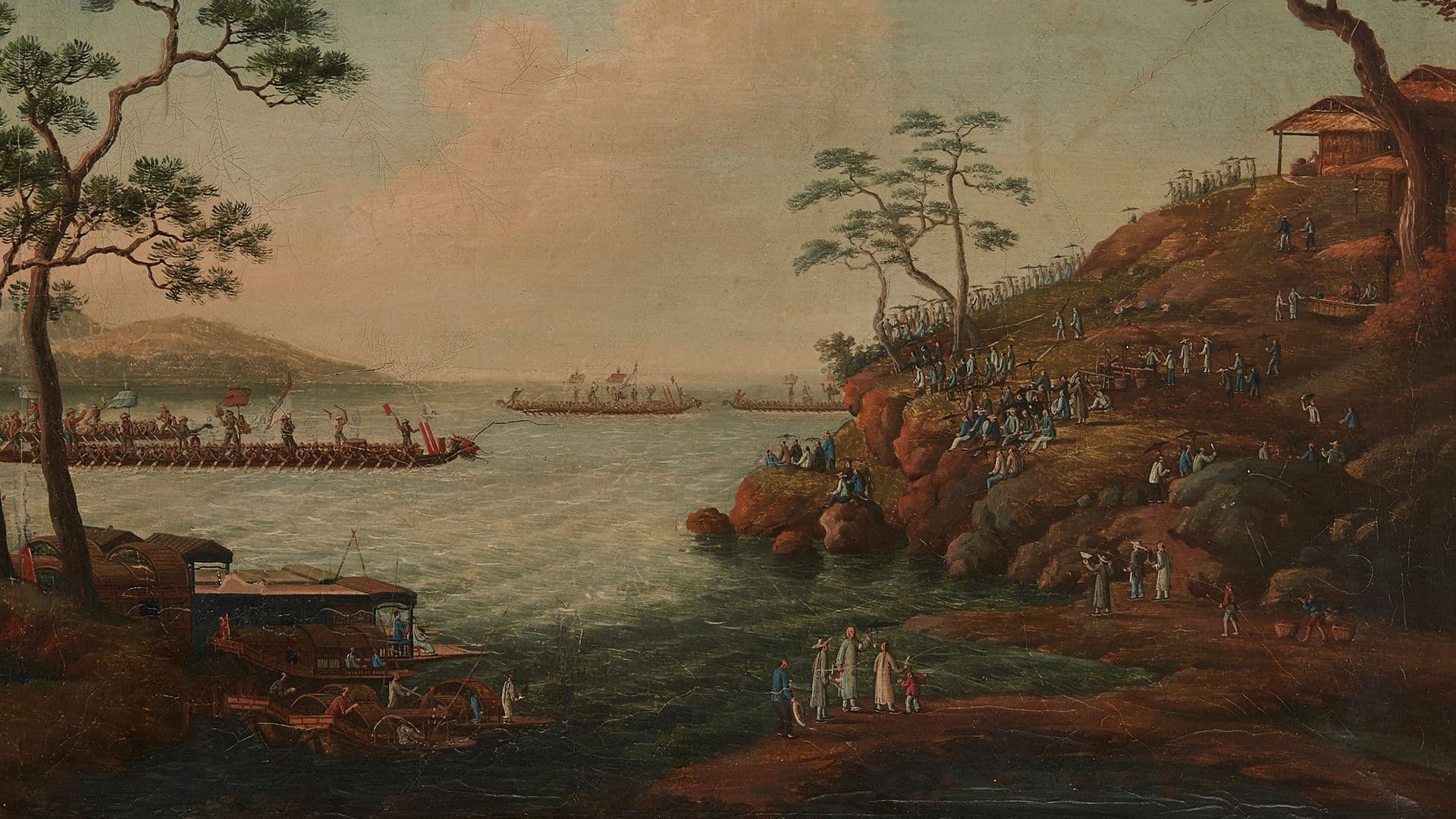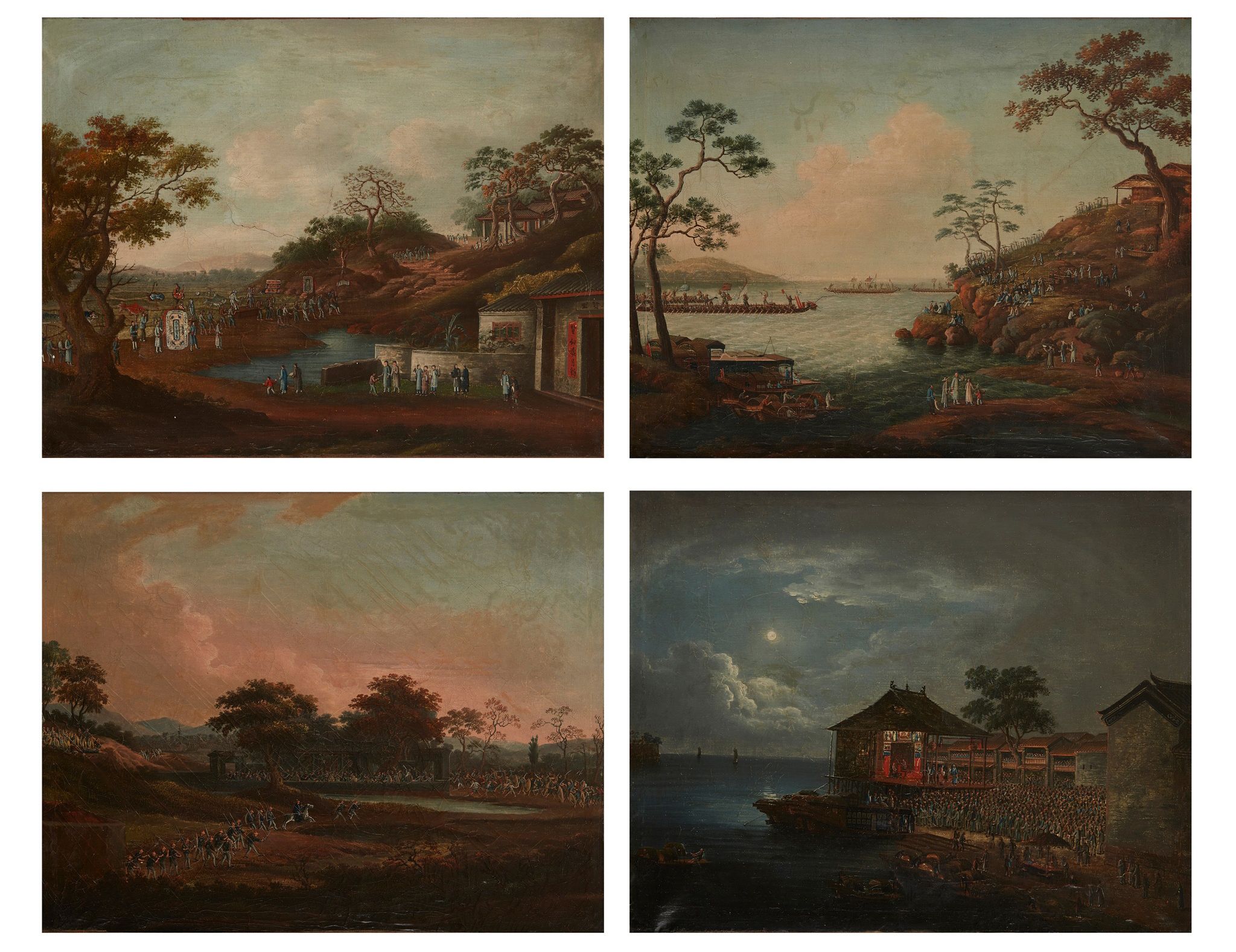Connecting East & West
Produced in response to the growing Western demand for ‘exotic’ goods in 18th and 19th centuries, China Trade Paintings were made as souvenirs for the European and North American merchants visiting Chinese trade ports.

26 May 2020
Grace Tu
Produced in response to the growing Western demand for ‘exotic’ goods in 18th and 19th centuries, China Trade Paintings were made as souvenirs for the European and North American merchants visiting Chinese trade ports.
Showing scenes from Chinese life, China Trade Paintings portrayed subjects which were likely to be of interest to Western visitors such as Chinese flora and fauna, imperial and bureaucratic scenes, and locations most often visited by foreign merchants such as the factories in Canton, the Pearl River and Macau. Some scenes were even inspired by, or copies of works by, European Old Masters. Catering to Western tastes, the style of these paintings is an amalgamation of Chinese and Western aesthetics.

In order to meet the great and immediate demand for China Trade products during the height of the trade boom from the mid-18th to the late 19th centuries, artists would often construct scenes from templates and paint backgrounds ready to be customised to shorten the production process. Generally falling into three categories: topographical, historical and ethnographic, ‘China Trade paintings’ are notable for their extremely detailed depictions of life in China and, particularly, their trade ports.
This set of paintings, featuring in our May live online edition of The Classic Tradition, are an unusual combination of subjects in unusual faux bamboo frames. The first painting depicts dragon-boat racing. Although first recorded in the Song Dynasty and still practised world-wide, it is however a rare subject for China Trade painters. The view of competing boats disappearing from view around a headland as crowds of onlookers watch from the cliff-tops would have been a dynamic visual record of life in China for a returning merchant or sea captain.
The second and third paintings depict a procession to celebrate Chinese New Year and an atmospheric lantern-lit view of a Chinese opera taking place in an open-air theatre right on the edge of the sea.
The fourth scene depicts an armed conflict between warring Chinese factions. It is tempting to suggest that the painting depicts The Taiping Rebellion, the civil war waged between the ruling Qing Dynasty and the Hakka led Taiping Heavenly Kingdom between 1850 and 1864. However, it is not entirely clear as although some soldiers wear the typical uniform of red jackets and blue trousers of the Taiping forces by no means all are and the opposing side’s uniforms are not readily identifiable either.
This raises further questions as to why Chinese artists, although painting for the export market, would choose to depict such a sensitive subject as an armed insurrection against the ruling dynasty. A conflict contemporary with the height of popularity for the production of China Trade paintings, such a scene could have been in commemoration of a successful, important victory for the Qing dynasty – a message to the world that the Qing Dynasty was strong and that this conflict was inconsequential.
As these works travelled west, China Trade paintings became bearers of information. While not wholly historically accurate, these scenes operated as valuable vehicles in the construction of reality, providing a a wealth of information concerning globalisation, international trade, and daily life in China during the in the mid-18th to late 19th centuries.
We are delighted to offer this set of China Trade Paintings in our live online edition of The Classic Tradition taking place on Thursday 28th May.